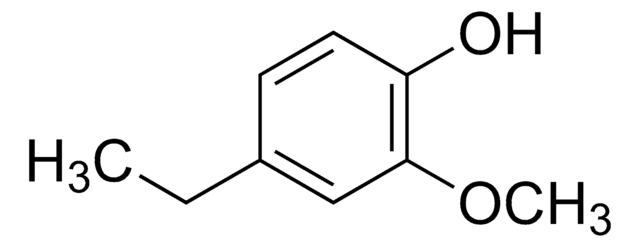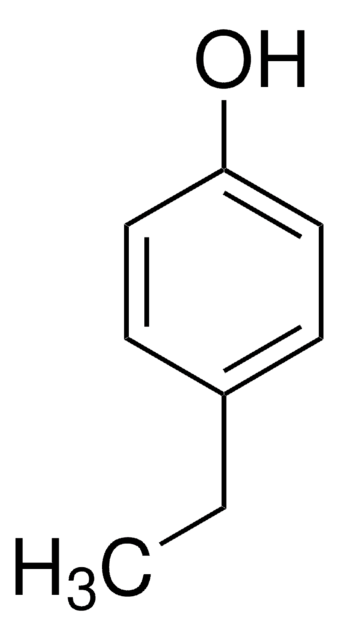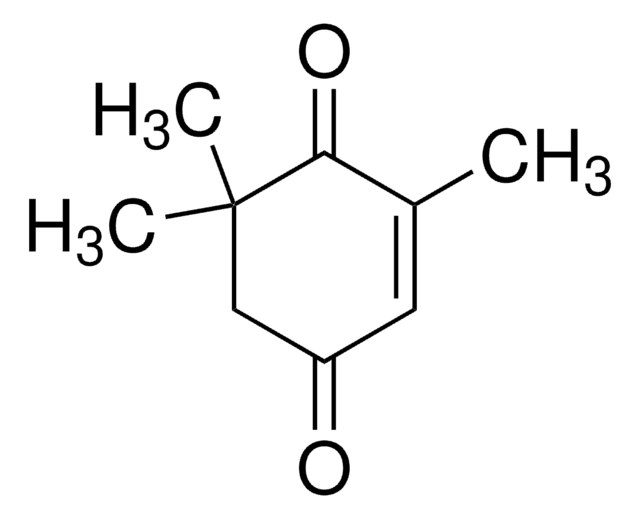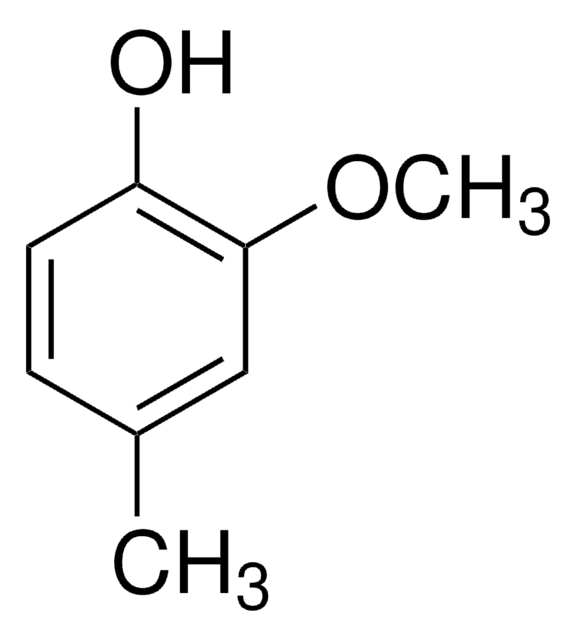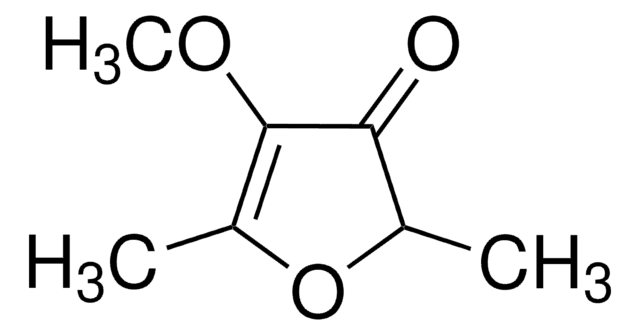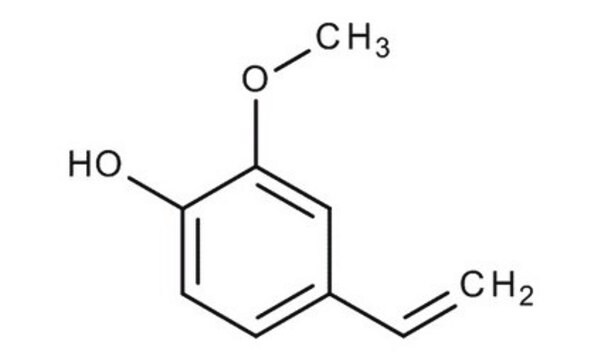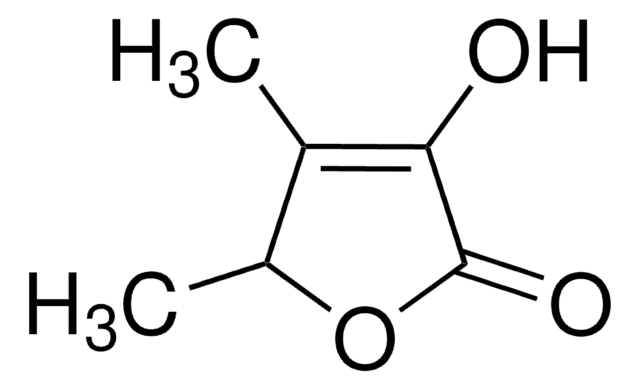모든 사진(2)
About This Item
Linear Formula:
C2H5C6H3-2-(OCH3)OH
CAS Number:
Molecular Weight:
152.19
FEMA Number:
2436
EC Number:
유럽평의회 번호:
176
MDL number:
UNSPSC 코드:
12164502
PubChem Substance ID:
플래비스(Flavis) 번호:
4.008
NACRES:
NA.21
추천 제품
Grade
FG
Fragrance grade
Halal
Kosher
natural
Agency
follows IFRA guidelines
규정 준수
EU Regulation 1223/2009
EU Regulation 1334/2008 & 178/2002
FDA 21 CFR 117
분석
≥97.5%
refractive index
n20/D 1.528 (lit.)
bp
234-236 °C (lit.)
mp
15 °C (lit.)
density
1.063 g/mL at 25 °C (lit.)
응용 분야
flavors and fragrances
문건
see Safety & Documentation for available documents
식품 알레르기항원
no known allergens
향수 알레르기항원
no known allergens
감각 수용성의
bacon; clove; leather; spicy; smoky
SMILES string
CCc1ccc(O)c(OC)c1
InChI
1S/C9H12O2/c1-3-7-4-5-8(10)9(6-7)11-2/h4-6,10H,3H2,1-2H3
InChI key
CHWNEIVBYREQRF-UHFFFAOYSA-N
유사한 제품을 찾으십니까? 방문 제품 비교 안내
신호어
Warning
유해 및 위험 성명서
Hazard Classifications
Eye Irrit. 2 - Skin Irrit. 2 - STOT SE 3
표적 기관
Respiratory system
Storage Class Code
10 - Combustible liquids
WGK
WGK 2
Flash Point (°F)
226.4 °F
Flash Point (°C)
108 °C
이미 열람한 고객
M Toyoda et al.
Pharmacology, 47(5), 300-308 (1993-11-01)
Wood creosote, a mixture of phenolic compounds, suppresses in vitro contractions of rat intestine. To identify a compound in wood creosote able to inhibit intestinal motility, we screened its constituent phenolic compounds and found 4-ethylguaiacol (4-EG) as an active compound.
C van der Sluis et al.
Journal of biotechnology, 88(2), 129-139 (2001-06-14)
Immobilization of salt-tolerant yeasts considerably decreases the total time required for the flavour development in soy-sauce processes. For immobilization of cells, alginate gel is mostly used as support material. However, alginate is not very suitable for use in soy-sauce processes
Ileana Vigentini et al.
FEMS yeast research, 8(7), 1087-1096 (2008-06-21)
Contamination of wine by Dekkera/Brettanomyces bruxellensis is mostly due to the production of off-flavours identified as vinyl- and especially ethyl-phenols, but these yeasts can also produce several other spoiling metabolites, such as acetic acid and biogenic amines. Little information is
Sierra Rayne et al.
Journal of environmental science and health. Part. B, Pesticides, food contaminants, and agricultural wastes, 42(8), 887-897 (2007-11-06)
Analyses of commercially available wines suggested non-Brettanomyces sources of 4-ethylphenol and 4-ethylguaiacol. Grapes, enological additions, exposure to plastics, and oak-barrel aging were potential inputs considered. Investigations of whole grape bunch samples from two major red wine Vitis vinifera cultivars (L.
Pierluigi Caboni et al.
Journal of agricultural and food chemistry, 55(18), 7288-7293 (2007-08-07)
Volatile phenols produced by Brettanomyces dekkera have been associate with off-flavors of wines. A versatile liquid chromatography-tandem mass spectrometry together with an HPLC-DAD-fluorescence methods were developed for the quantitation of two phenols, 4-ethylphenol (4EP) and 4-ethylguaiacol (4EG), in red and
자사의 과학자팀은 생명 과학, 재료 과학, 화학 합성, 크로마토그래피, 분석 및 기타 많은 영역을 포함한 모든 과학 분야에 경험이 있습니다..
고객지원팀으로 연락바랍니다.